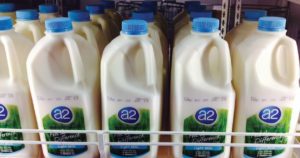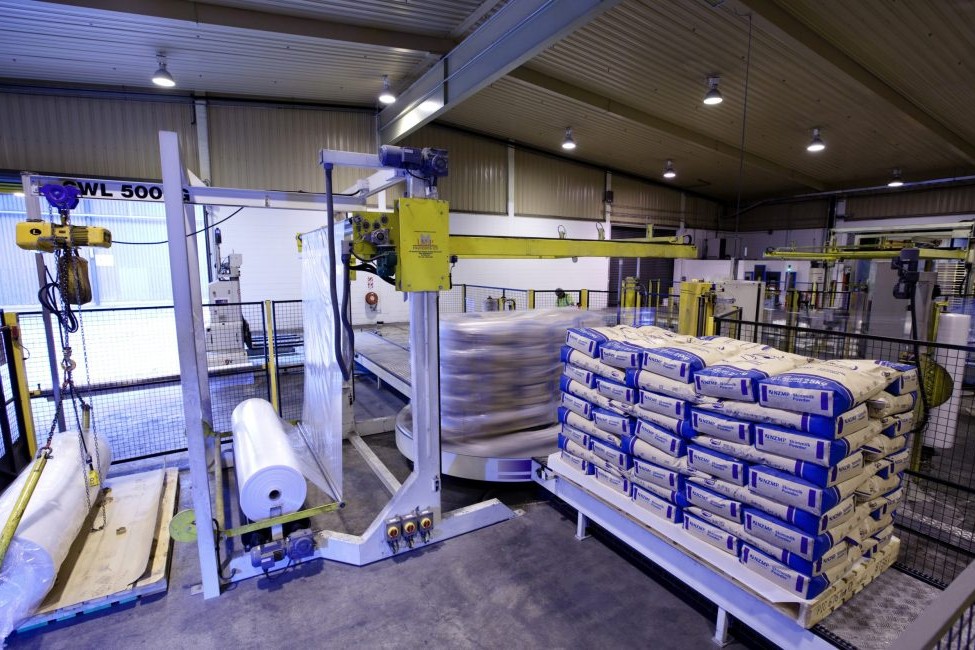While A2 milk is ‘on trend’ in many markets, the a2 Milk Company’s recent troubles has had a knock-on effect on that sector of the New Zealand dairy industry. Phil Edmonds reports.
The a2 Milk Company’s very public undoing has naturally generated extensive interest given its extraordinary rise in double-quick time to the top echelons of New Zealand’s most valuable traded businesses.
Much of the conjecture has focused on whether the company itself was a house of cards waiting for a breeze to blow it down. The dramatic 30.3% fall in revenue for the year to June might suggest so, but the jury remains out on whether it’s a blip or the result of a fundamental misreading of the market.
To a large extent though, that is all ‘over there’ and not ‘here’. While The a2 Milk Company was founded in NZ and is listed on the NZX, its corporate headquarters is in Australia and most of its ownership is concentrated offshore.
Little has been said in the commentary to date about any implications for the NZ dairy industry, and if The a2 Milk Company’s fall from grace justifies farmers rethinking the value of committing their herds to an a2 future.
Before mulling over any glaring missteps taken, The a2 Milk Company’s erstwhile success needs to be acknowledged – due in large part to world-class marketing of a product without conclusively proven health claims.
While the product has a unique attribute (the beta-casein component of the protein in the milk) it is not one the consumer can immediately recognise through the most fundamental senses of taste or texture. Nor is the argument made for consuming it clear. The sub-tag used to promote the company’s fresh milk is not exactly an unambiguous proof point – ‘Many people who drink a2 milk say they feel the difference’.
The opaque seal of approval is not surprising. Last year Consumer NZ looked at the evidence for claims made and cited a systemic review published in Nutrition Reviews, which contemplated 25 studies involving a2 milk, which found only moderate support for claims made on digestive symptoms, and low to very low certainty for all other outcomes.
But that hasn’t mattered a jot to consumers, even if it has bamboozled the purists, of which there have been plenty sitting on the side-lines, waiting for the lack of robust science to catch up with a2 milk.
In May this year NZTE published comprehensive consumer insight research on dairy in NZ’s key markets. It found that for infant formula (which is a2 Milk’s hero product), sustainability focused segments of ‘ethical’ and ‘on trend’ were most important. Of eight attributes analysed, ‘on trend’ was the most important factor in the United Kingdom and United States and equally as important as ‘healthy’ (and more significant than ‘safe’) in China. This research goes a considerable way towards supporting a2 Milk’s strategic focus on marketing over science. This strategy has been endorsed by some analysts of the China market, who believe Chinese consumers have little concern for science claims and attribute primary importance to whether the product is trendy or not.
Where a2 Milk has dramatically fallen down is now well-documented – principally due to Covid-19 abruptly curtailing the daigou/reseller and e-commence trade channels which provide market access into China for the company’s English label infant formula products.
As a result of this unexpected event, a2 Milk ended up with ‘excess inventory issues’ (stockpiles of product losing freshness), which in its own words caused a ‘dramatic change in circumstances’. By the end of its financial year in June, The a2 Milk Company’s stockpile of product had been written down $108.6 million including disposal costs.
Cauterising the inventory hasn’t stopped the bleeding, however. The company says its outlook remains uncertain and that it will take time to recover – beyond the 2022 year.
All the a2 Milk Company’s woes can’t be blamed on Covid-19. Earlier in the year it noted the China infant nutrition market structure was changing rapidly, with volumes down driven by a significant reduction in the birth-rate. This development naturally led to more intense competition among leading multinational brands, and the pressure was exacerbated by the emerging strength of local brands in domestic channels.
The obvious questions that emerge from the company’s recent struggles are whether it factored in the potential for softening demand in China from the falling birth rate, whether it foresaw Chinese consumers becoming more willing to support local brands, and whether there was an appropriate level of risk management associated with its reliance on daigou/e-commerce as a means to reach its customers.
On the latter, it’s hard not to imagine the company got caught up in a ‘make hay while the sun shines’ approach. And why not. The cost of servicing the channel compared with the outlay required to maintain a supply chain within China is more or less negligible. It is paying for that now but realistically, it’s being funded by the huge gains it has made to date. In the long run the daigou stoppage may be considered a temporary nuisance.
For the drop in births, The a2 Milk Company may well have just backed the brand to increase its reach within China and extend its market share. Based on the brand’s success in the years leading up to Covid-19, there’s probably no reason to think this wasn’t possible. On the appeal of local alternative products, a2 Milk won’t be the only company to have mis-read this – if they did. Arguably all multinational companies selling products and services in China are dealing with this development, which seems to be the manifestation of a politically driven project to reignite nationalism.
None of these failings, it should be noted, can be blamed on a2 Milk failing to invest in more science.
So, what does this mean for the producers of a2 Milk’s products – who have been largely ignored in the analysis so far?
It’s fair to say The a2 Milk Company’s slide has created collateral damage in NZ.
For a start, Synlait’s reliance on a2 Milk’s market performance has had a direct impact on its own financial position. Synlait has an exclusive contract to supply a2’s infant formula for Australia, New Zealand and China, which expires in 2025, and will have built up its production to service the contract.
In an earnings guidance update earlier in the year Synlait said the impact of the ongoing uncertainty in the expected demand from its largest customer in the foreseeable future meant it could not be confident about its infant base powder production and asset use. That confidence has clearly weakened. Ahead of its full year earnings announcement at the end of September, Synlait revealed it was selling an Auckland manufacturing property to pay down debt and was cutting 150 jobs to reduce costs.
More interest has focused on the fortunes of the fledgling Mataura Valley Milk, which a2 Milk took a controlling (75%) stake in this year. The wheels of this deal were set in motion ahead of a2 Milk’s recent adversity, based on a strategic decision to diversify its supply base, gain access to manufacturing margins, and enable it to pursue product innovation opportunities in the future. But since coming off the rails, the acquisition might now be something a2 Milk could have done without.
In August, a month after the acquisition was completed, the company said it had revised down its volume assumptions for product to be transferred to Mataura Valley Milk over the next three years and a2 Milk is not expecting positive earnings from its venture until the 2025 year.
Those farmers supplying both Synlait and Mataura Valley Milk might not be bearing the brunt of a2’s misfortunes – competitive milk price agreements mean the shareholders of these companies rather than farmers will be shedding the sweat. But there will be some concern in the short-medium term as to whether the demand for their milk will be maintained, if not grow.
As for the majority of NZ dairy farmers not exposed by these contractual arrangements, there might be some reflecting on any opportunity cost incurred by investing in A2 genetics – which many have done. In its latest financial report, LIC noted its premium genetics range (including A2/A2 bull teams) accounted for almost half its AB inseminations, double that of three years ago.
Despite the joint venture with a2 Milk announced in 2018 to create a new milk pool, Fonterra has not outwardly promoted or supported genetic transition. In 2019 it revealed it was signing up farms in the Waikato to supply A2 Milk to its Hautapu base but there has been no official communication since.
One Waitako Fonterra supplier spoken to said they had seen no direction at all from Fonterra on building A2 herds, and Fonterra had done nothing to project a future where A2 milk would be in greater demand.
“Fonterra would have to give farmers a long time of notice if they expected greater supply of A2 milk, and they have never done that. Given that, you have to wonder if it’s worth forgoing genetic gains in other areas by narrowing yourself down to using just A2/A2 bulls.”
It’s difficult to know right now where the popularity of A2 might end up. Outside of China and infant formula it might continue to sit on the premium shelf and compete with alternative milks for attention. Right now, it’s not doing a bad job. In its earnings announcement in August a2 Milk noted its revenue from fresh milk sales in Australia had increased by 10.8% to $169 million and had 12.2% market value at the end of June this year.
The a2 Milk Company’s recent floundering is not, however, likely to influence the category’s future in China. Various commentators have pointed to the opportunities that will exist to develop innovative A2 products beyond infant formula, and looking forward, Chinese government initiatives to address the declining birth rate are expected to have a ‘positive and stabilising impact’ on the market. Perhaps most of all, The a2 Milk Company shareholders and the farmers supplying (and preparing to supply) A2 milk will be hoping the category just remains trendy.





